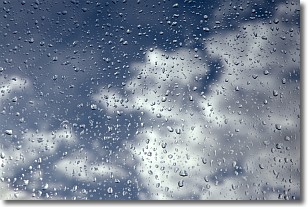Weather Alert in California
Special Weather Statement issued July 30 at 7:28AM PDT by NWS San Francisco CA
AREAS AFFECTED: San Francisco; Coastal North Bay Including Point Reyes National Seashore; North Bay Interior Valleys; San Francisco Bay Shoreline; San Francisco Peninsula Coast; Northern Monterey Bay; Southern Monterey Bay and Big Sur Coast
DESCRIPTION: ...TSUNAMI ADVISORY IS IN EFFECT FROM THE SONOMA COASTLINE DOWN THROUGH THE BIG SUR COASTLINE INCLUDING SF AND MONTEREY BAY... * UPDATES... There have been no significant changes since the last statement. * LOCAL IMPACTS...Dangerous currents and fast tidal swings will persist through the morning due to impacts from an ongoing tsunami event. These conditions are hazardous to swimmers, boats, and coastal structures. Widespread inundation is NOT expected. However, damage at the harbors is possible. Surging water in and out of harbors and changing water levels can cause boats and docks to detach from structures. * RECOMMENDED ACTIONS... If you are located in this coastal area, move off the beach and out of harbors and marinas. Do not go to the coast to watch the tsunami. Be alert to instructions from your local emergency officials. Tsunamis often arrive as a series of waves or surges which could be dangerous for many hours after the first wave arrival. * FORECAST TSUNAMI DURATION...The Advisory remains in effect until further notice. * OBSERVED TSUNAMI WAVE HEIGHTS FROM EARLIER... San Francisco 1.2 ft at 0224 AM PDT on Jul 30 Point Reyes California 2.6 ft at 0423 AM PDT on Jul 30 Monterey California 1.5 ft at 0424 AM PDT on Jul 30 Richmond California 0.8 ft at 0241 AM PDT on Jul 30 Alameda California 1.2 ft at 0247 AM PDT on Jul 30 Redwood City California 0.6 ft at 0425 AM PDT on Jul 30 * PRELIMINARY EARTHQUAKE INFORMATION... An earthquake occurred with a preliminary magnitude of 8.8. This product will be updated as new information becomes available. Stay tuned to your local news source and NOAA weather radio for further information and updates.
INSTRUCTION: N/A
Want more detail? Get the Complete 7 Day and Night Detailed Forecast!
Current U.S. National Radar--Current
The Current National Weather Radar is shown below with a UTC Time (subtract 5 hours from UTC to get Eastern Time).

National Weather Forecast--Current
The Current National Weather Forecast and National Weather Map are shown below.

National Weather Forecast for Tomorrow
Tomorrow National Weather Forecast and Tomorrow National Weather Map are show below.

North America Water Vapor (Moisture)
This map shows recent moisture content over North America. Bright and colored areas show high moisture (ie, clouds); brown indicates very little moisture present; black indicates no moisture.

Weather Topic: What are Cumulonimbus Clouds?
Home - Education - Cloud Types - Cumulonimbus Clouds
 Next Topic: Cumulus Clouds
Next Topic: Cumulus Clouds
The final form taken by a growing cumulus cloud is the
cumulonimbus cloud, which is very tall and dense.
The tower of a cumulonimbus cloud can soar 23 km into the atmosphere, although
most commonly they stop growing at an altitude of 6 km.
Even small cumulonimbus clouds appear very large in comparison to other cloud types.
They can signal the approach of stormy weather, such as thunderstorms or blizzards.
Next Topic: Cumulus Clouds
Weather Topic: What is Drizzle?
Home - Education - Precipitation - Drizzle
 Next Topic: Evaporation
Next Topic: Evaporation
Drizzle is precipitation in the form of water droplets which are
smaller than raindrops.
Drizzle is characterized by fine, gently falling droplets and typically does not
impact human habitation in a negative way. The exception to this is freezing drizzle,
a condition where drizzle freezes immediately upon reaching earth's surface.
Freezing drizzle is still less dangerous than freezing rain, but can
potentially result in hazardous road conditions.
Next Topic: Evaporation
Current conditions powered by WeatherAPI.com




